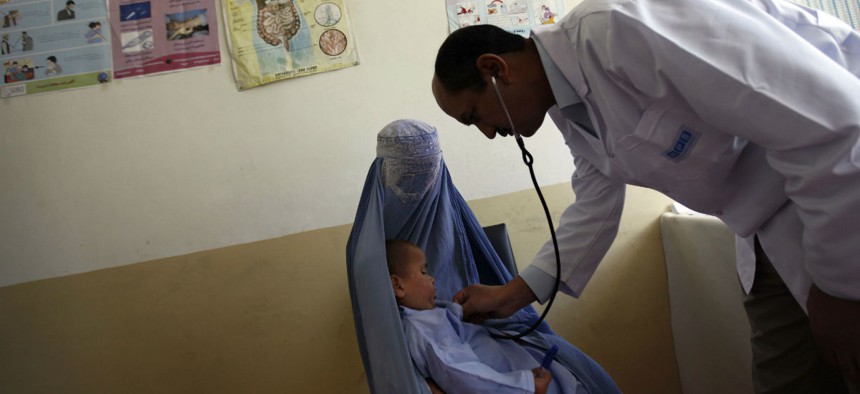USAID Updates Error-Riddled Map of Afghan Health Clinics
Watchdog found locations of 80 percent of health facilities were incorrectly documented.
A $210 million U.S.-funded health care program run by the Afghan government risks ineffective oversight because of faulty maps relied on by the U.S. Agency for International Development, a watchdog asserted.
In response to findings by the Special Inspector General for Afghanistan Reconstruction, released in a letter Wednesday, the agency announced that it is sending the IG an updated map.
Of 641 health clinics funded in a partnership run by the Afghan Public Health Ministry, almost 510, or 80 percent, were found by SIGAR analysis of geospatial data to be wrongly located.
John Sopko, in a June 25 letter to acting USAID Administrator Alfonso Lenhardt, spelled out the map’s flaws:
- Coordinates for 13 clinics were located outside of Afghanistan, with one in the Mediterranean Sea;
- Coordinates for 30 facilities were located in a province different from the one USAID reported;
- In 13 cases, USAID reported two different funded facilities at the same coordinates;
- 189 listings showed no physical structure within 400 feet of the reported coordinates, and a subset of 81, or just under half of these locations, showed no physical structure within a half mile of the reported coordinates; and
- 154 coordinates did not clearly identify a specific building.
Larry Sampler, assistant to the USAID administrator for Afghanistan and Pakistan affairs, said in a statement:
"GPS coordinates are not the first line in monitoring a health facility. Local staff, third-party monitors, Afghan Government officials, and the benefiting community do not use GPS to navigate, let alone to find a health facility, because they are familiar with the area or from the community benefiting from the project. It has been a common practice for Afghan ministries to use the location of a village center as the coordinates for a facility, particularly when there was limited access to GPS technology. USAID is taking advantage of technological gains and is currently working with the Ministry of Public Health to provide map support and to update older and sometimes inaccurate GPS coordinates."
Sampler defended the agency’s efforts and said USAID has helped Afghans achieve “dramatic health progress” over the last decade. USAID has a “rigorous monitoring program” through which local staff and third party monitors document their performance and ensure the facilities are appropriately staffed and managed, he said,
A USAID spokesperson said SIGAR relied on data provided by the Afghan Ministry of Public Health for its analysis, not on USAID-maintained data. USAID is working with other donors to help the ministry improve its GPS data, but the effort will take time.
“After receiving SIGAR's letter, in which SIGAR raises concerns for the first time with USAID about [Afghan Ministry of Public Health] GPS data, our staff reviewed the 13 examples cited in SIGAR's letter as having coordinates that fall outside of Afghanistan. All but one of these sites were matched to the most recent MoPH data with coordinates within Afghanistan. The remaining facility cannot be mapped because the latitude and longitude data were entered incorrectly,” the spokesperson said.
A SIGAR spokesman told Government Executive the watchdog's analysis was done using data supplied by USAID.
This story was updated with a comment from the SIGAR spokesman.




